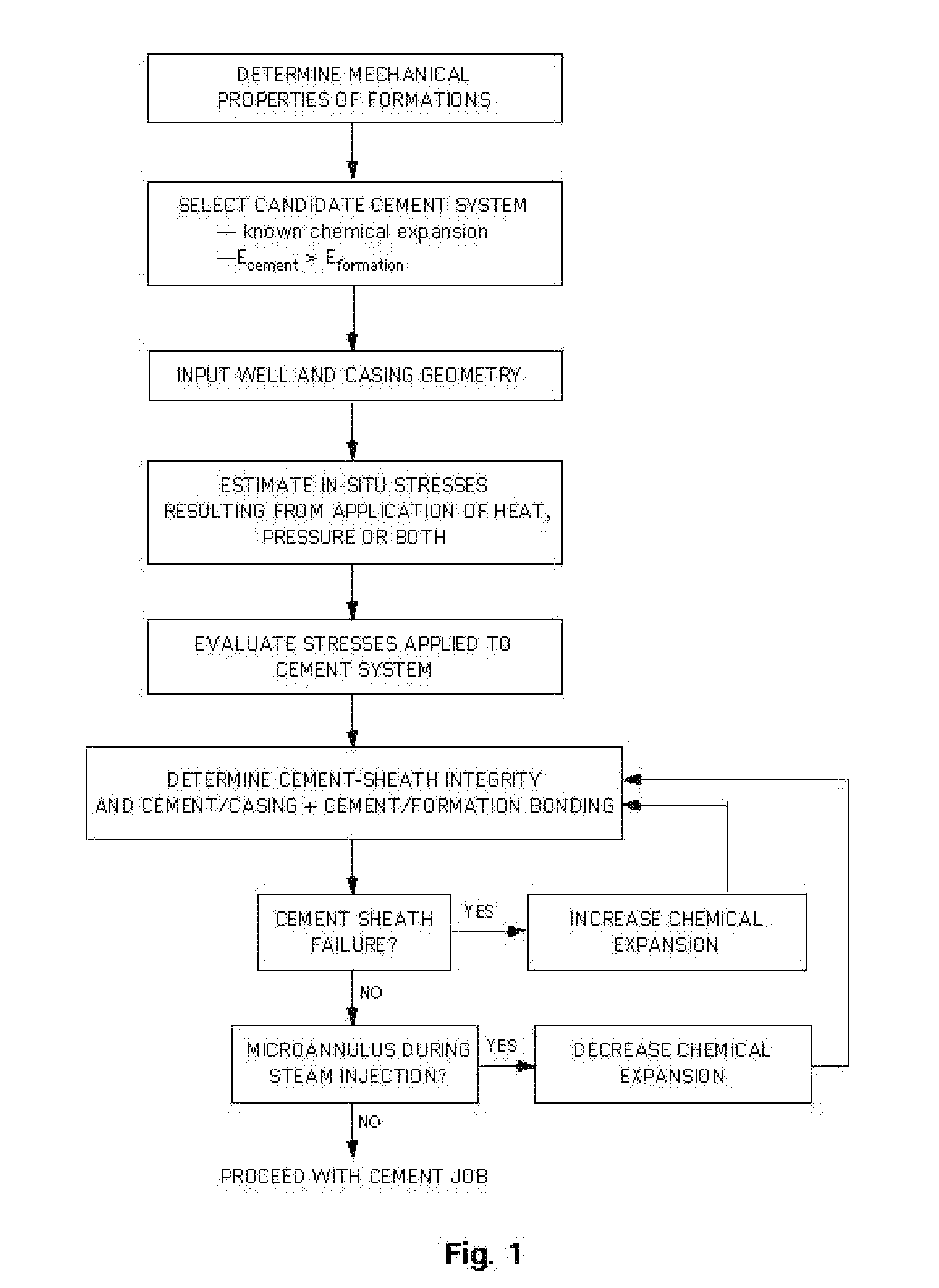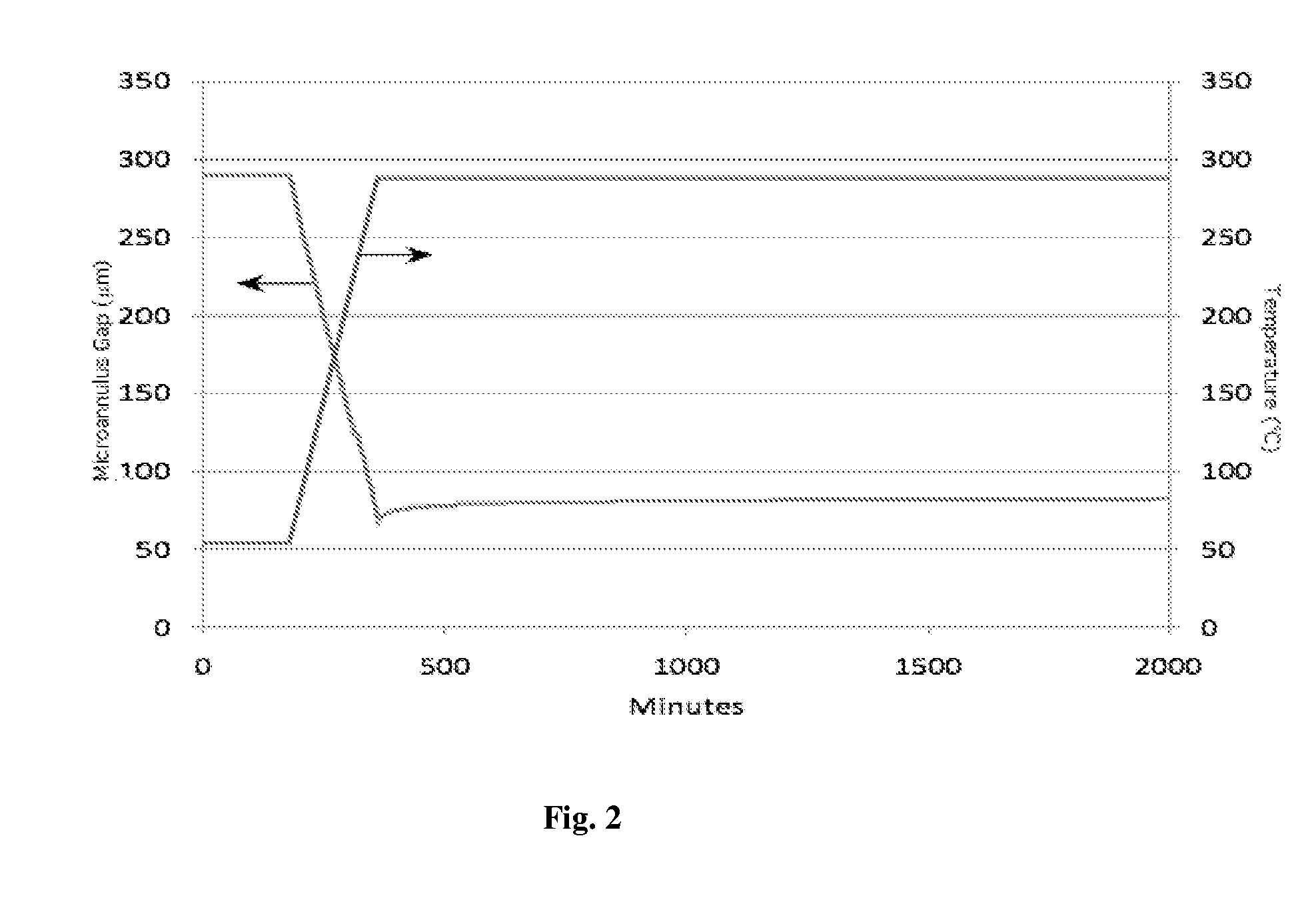Methods for completing thermal-recovery wells
- Summary
- Abstract
- Description
- Claims
- Application Information
AI Technical Summary
Benefits of technology
Problems solved by technology
Method used
Image
Examples
example 1
[0041]The simulation considered a temperature increase from the initial bottomhole static temperature (54° C.) to the final steam-injection temperature (288° C.) in 3 hours. As shown in Table 1, the cement system has a higher Young's modulus than the formation. The initial candidate cement system did not contain a chemical expansion agent.
[0042]Following the flow chart of FIG. 1, the computer simulator evaluated the stresses on the cement system arising from the steam-injection. The software predicted cement-sheath failure in tension when the temperature reached 183° C., well below the final steam-injection temperature. Therefore, according to the method, one modifies the candidate cement system such that there is chemical expansion after setting.
[0043]The second simulation considered a cement system with the same properties, except that it contained an expanding agent. The expanding agent provided a linear expansion of 0.5% before steam injection. As shown in FIG. 2, this created a...
example 2
[0045]The well conditions of Example 1 were used to evaluate the effect of different amounts of linear expansion. For each linear-expansion value, the simulator predicted the size of the initial microannulus, the size of the final microannulus during steam injection, and the maximum tangential stress generated in the cement sheath. The results are presented in FIG. 4. Several points were noted.
[0046]For linear-expansion levels less than about 0.12% (Point A on FIG. 4), the tangential stress generated in the cement sheath during steam injection is greater than the tensile strength of the cement. Points to the left of Point A are not acceptable.
[0047]For linear-expansion levels above 0.35% (Point B on FIG. 4), a microannulus exists during the steam-injection phase. Points to the right of Point B are not acceptable. An acceptable range of linear expansion is between Points A and B, or, from 0.12% to 0.35% linear expansion.
PUM
 Login to View More
Login to View More Abstract
Description
Claims
Application Information
 Login to View More
Login to View More - R&D
- Intellectual Property
- Life Sciences
- Materials
- Tech Scout
- Unparalleled Data Quality
- Higher Quality Content
- 60% Fewer Hallucinations
Browse by: Latest US Patents, China's latest patents, Technical Efficacy Thesaurus, Application Domain, Technology Topic, Popular Technical Reports.
© 2025 PatSnap. All rights reserved.Legal|Privacy policy|Modern Slavery Act Transparency Statement|Sitemap|About US| Contact US: help@patsnap.com



